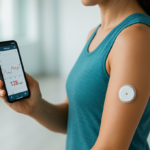Introduction: The Biohacker’s Holy Grail?
In the world of biohacking and performance optimization, recovery has emerged as the ultimate competitive advantage. While most fitness trackers obsess over steps and calories burned, a growing community of elite athletes, health enthusiasts, and longevity-focused individuals have discovered that the real magic happens during rest. Enter the Oura Ring, a sleek, discreet wearable that has captured the attention of everyone from NBA players to Silicon Valley executives, promising to revolutionize how we understand and optimize our sleep and recovery.
Unlike bulky smartwatches that disrupt your sleep or require nightly charging, the Oura Ring delivers clinical-grade health insights in a form factor so subtle you’ll forget you’re wearing it. But with a premium price tag starting at $299-$349 and a required monthly subscription of $5.99, the question remains: Does this tiny piece of technology truly deliver on its promise to be the ultimate sleep and recovery tracker for biohackers?
After diving deep into the scientific research, user reviews, and competitive landscape, this comprehensive review will help you determine whether the Oura Ring deserves a place on your finger—and in your optimization toolkit.
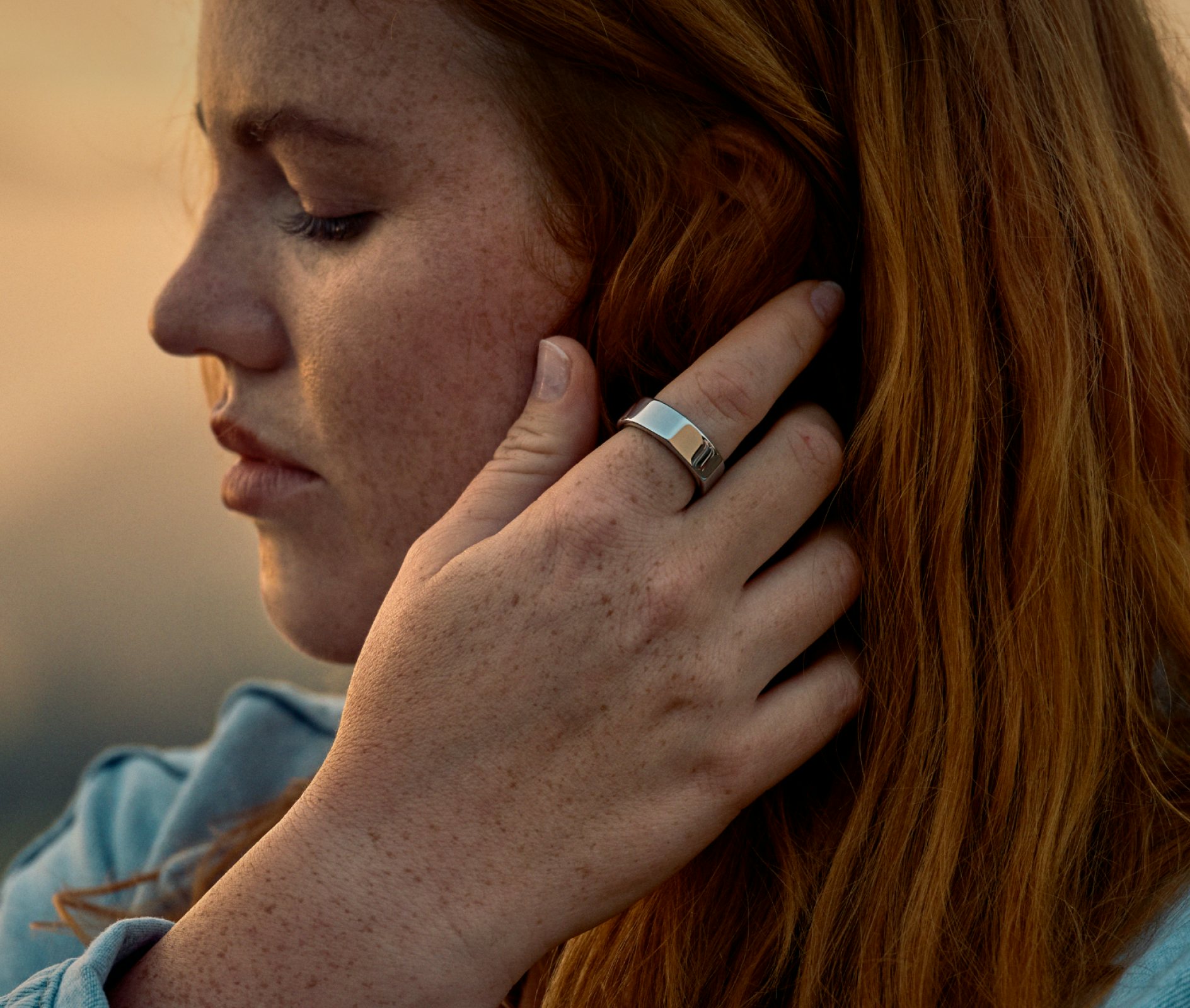
What Makes Oura Ring Different? The Science Behind the Sensors
The Oura Ring isn’t just another fitness tracker shrunk down to ring size. It represents a fundamental shift in how we approach wearable health technology, prioritizing recovery over activity and sleep quality over step counts. At its core, the Oura Ring packs an impressive array of medical-grade sensors into a surprisingly compact 4-7mm titanium ring that weighs less than a nickel.
Advanced Sensor Technology: 15+ Biosignals in a Ring
The third and fourth generation Oura Rings feature a sophisticated sensor suite that would make many medical devices jealous. The ring contains green, red, and infrared LEDs working in concert with photoplethysmography (PPG) sensors to capture a comprehensive picture of your physiological state. Here’s what each sensor does:
Green LEDs enable 24/7 heart rate monitoring through photoplethysmography technology. Unlike wrist-based devices that struggle with accuracy during movement, the ring’s finger placement provides superior signal quality due to better blood flow in your digits. This allows for continuous cardiovascular tracking throughout the day and night without the accuracy degradation common in wrist-worn devices.
Red LEDs power the SpO2 (blood oxygen) tracking feature, which monitors your oxygen saturation levels during sleep. This capability is particularly valuable for detecting breathing disturbances, sleep apnea indicators, and altitude acclimatization. The red light wavelength penetrates tissue differently than green light, providing complementary data about your cardiovascular and respiratory health.
Infrared LEDs optimize nighttime tracking without disrupting your sleep with visible light. These sensors work silently in the background, capturing heart rate, heart rate variability (HRV), and movement data while you sleep. The infrared approach ensures that the ring doesn’t emit any light that could interfere with melatonin production or sleep quality—a critical advantage over smartwatches with bright displays.
Temperature sensors represent one of Oura’s most powerful features, capable of detecting variations as small as 0.1°C from your personal baseline. This precision enables early illness detection (often 1-2 days before symptoms appear), menstrual cycle tracking, ovulation prediction, and pregnancy monitoring. The continuous temperature monitoring functions as an automatic basal body temperature tracker, eliminating the need for manual morning measurements.
Accelerometer and gyroscope sensors capture movement patterns for sleep staging, activity classification, and daily movement tracking. These sensors work alongside the optical sensors to provide context about whether you’re sleeping, walking, running, or engaged in other activities.
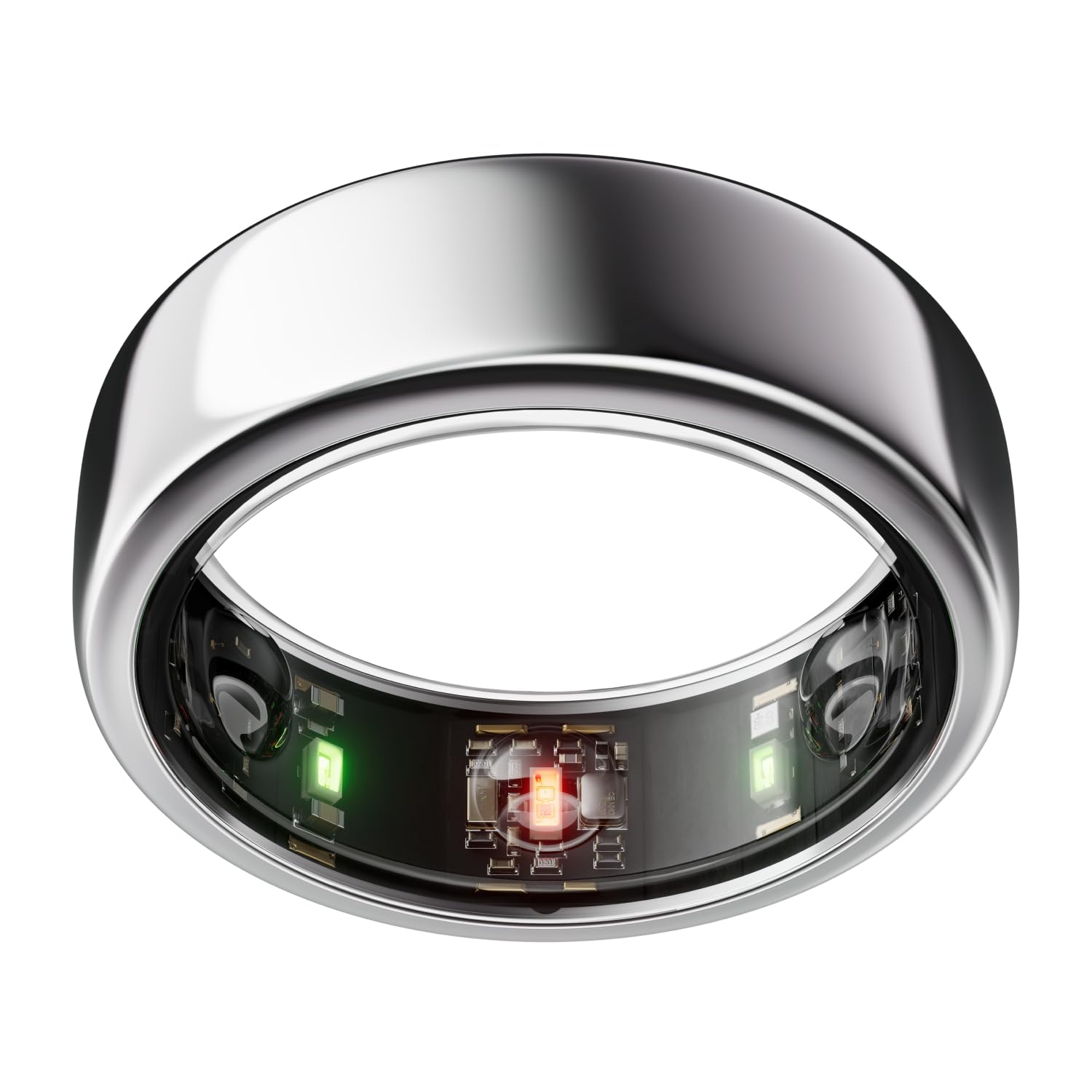
Technical Specifications That Matter
Beyond the sensors themselves, the Oura Ring’s technical specifications reveal why it outperforms many competitors:
| Specification | Details | Why It Matters |
|---|---|---|
| Memory | 16MB (32x increase from Gen 2) | Enables week-long data storage and on-device processing |
| Battery Life | 7-8 days on single charge | True continuous monitoring without daily charging anxiety |
| Water Resistance | 100m (10 ATM) | Suitable for swimming, saunas, ice baths, and all daily activities |
| Charging | USB-C magnetic stand | Universal charging with any USB-C cable while traveling |
| Materials | Titanium with PVD coating | Hypoallergenic, durable, and scratch-resistant |
| Weight | 4-6 grams (depending on size) | Imperceptible during wear, including sleep |
The ring form factor itself provides a significant advantage over wrist-based devices. Fingers have better blood flow and more consistent contact with sensors, resulting in cleaner signals and more accurate measurements. This is particularly important for HRV tracking, where even small measurement errors can lead to misleading recovery assessments.
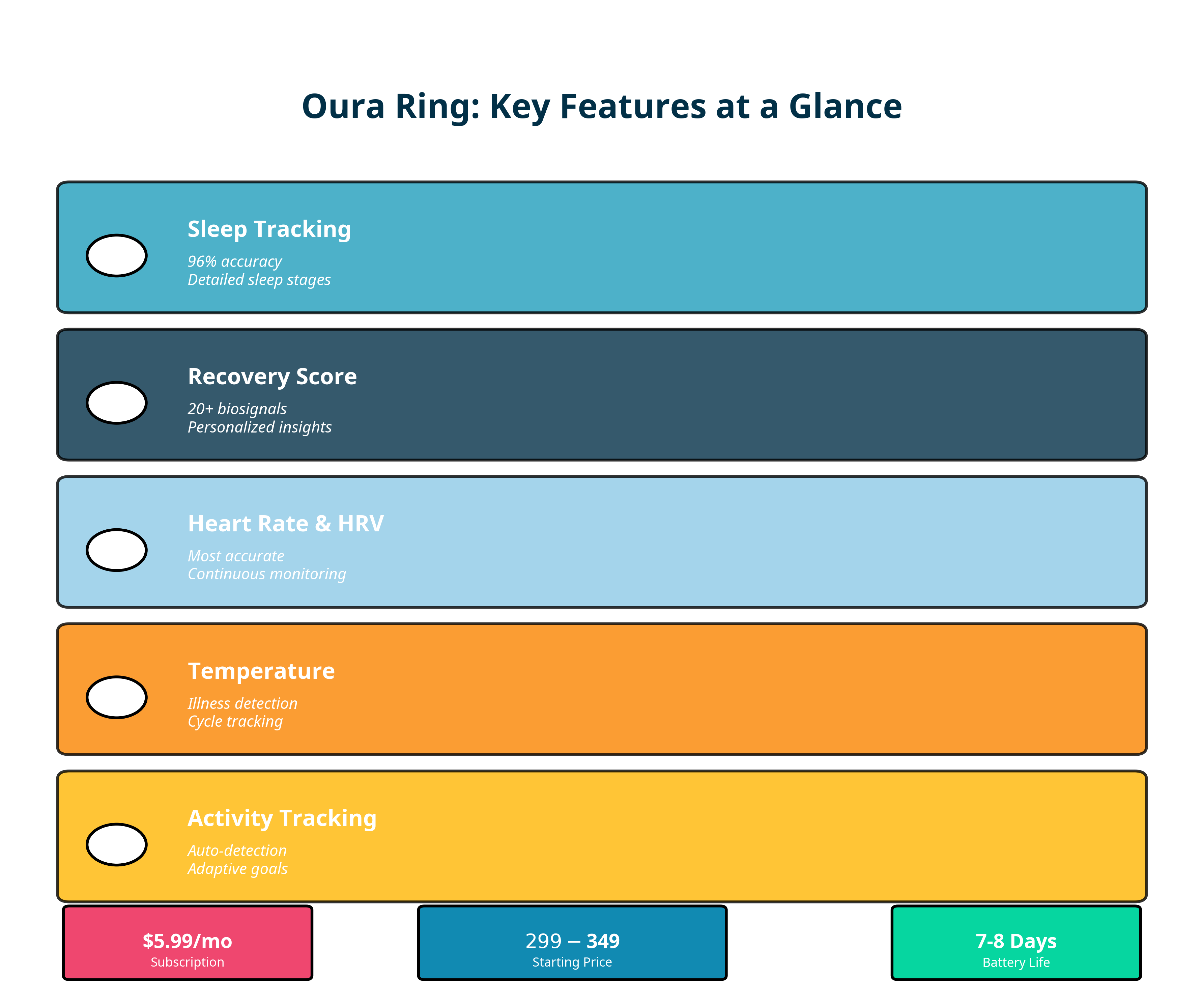
The Three Core Scores: Your Daily Health Dashboard
Oura Ring distills complex physiological data into three primary scores that guide your daily decisions: Readiness, Sleep, and Activity. Unlike other wearables that bombard you with dozens of metrics, Oura’s approach emphasizes actionable insights over data overload.
Readiness Score: The Recovery Gold Standard
The Readiness Score (0-100) represents Oura’s most valuable contribution to biohacking. This metric synthesizes over 20 different biosignals to answer a single critical question: How prepared is your body to take on physical and mental stress today?
The Readiness Score integrates multiple data streams including heart rate variability (HRV), resting heart rate, body temperature deviation, sleep quality, sleep balance (comparing recent sleep to your long-term average), activity balance (assessing whether you’re overtraining or undertraining), and previous day’s activity. This holistic approach distinguishes Oura from competitors that focus on single metrics like HRV or sleep duration alone.
What makes the Readiness Score particularly powerful is its historical context. Rather than simply telling you your HRV was 45ms this morning, Oura compares this to your personal baseline over the past weeks and months. A 45ms HRV might be excellent for one person and concerning for another—Oura understands this nuance and adjusts its recommendations accordingly.
Real-world users report that following Readiness Score guidance leads to 30-40% improvements in training consistency and significant reductions in overtraining symptoms. When your Readiness Score drops below 70, Oura automatically adjusts your daily activity goals downward, encouraging rest rather than pushing through fatigue. This adaptive approach helps prevent burnout and injury while maximizing long-term performance gains.
Sleep Score: 96% Accuracy Backed by Science
The Sleep Score (0-100) evaluates the quality and quantity of your rest across multiple dimensions. Unlike simple sleep trackers that only measure duration, Oura assesses total sleep time, sleep efficiency (time asleep vs. time in bed), restfulness (movement and wake-ups), REM sleep duration and timing, deep sleep duration and timing, sleep latency (time to fall asleep), and sleep timing consistency.
Independent scientific validation confirms Oura’s exceptional accuracy. A peer-reviewed study published in 2022 found that the Oura Ring achieves 96% sensitivity for sleep detection—meaning it correctly identifies when you’re asleep 96% of the time. For sleep stage classification, Oura demonstrates 65% agreement with polysomnography (the gold standard) for light sleep, 51% for deep sleep, and 61% for REM sleep. While these percentages might seem modest, they actually represent best-in-class performance for consumer wearables.
The Oura Ring automatically detects naps and extended sleep periods without requiring manual input. If you go back to bed after dropping the kids at school, Oura captures that additional rest and incorporates it into your daily sleep total. This automatic detection extends to nighttime awakenings as well—Oura accurately identifies when you’re lying awake versus sleeping, providing honest feedback about your sleep quality.
One of Oura’s most valuable sleep features is resting heart rate monitoring, which identifies the lowest point your heart rate reaches during sleep. This metric serves as a powerful indicator of recovery status and cardiovascular fitness. A rising resting heart rate over several nights often signals overtraining, illness, or excessive stress, while a declining trend indicates improving fitness and recovery capacity.
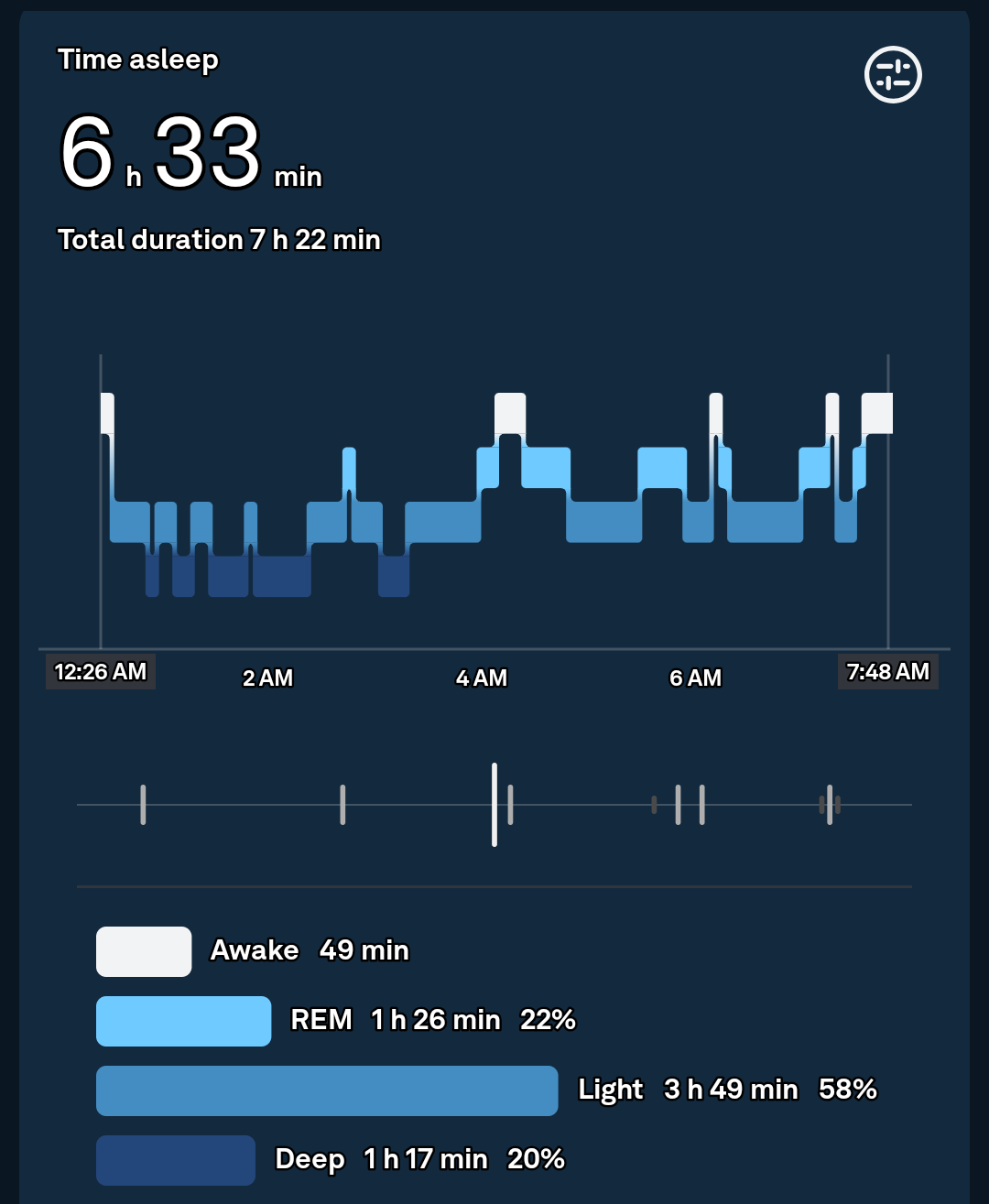
Activity Score: The Least Impressive of the Three
The Activity Score (0-100) tracks daily movement, exercise, and calorie burn. While functional, this is where Oura shows its limitations compared to dedicated fitness trackers. The Activity Score considers step count, calorie burn, inactive time, training frequency, and training volume, but does so with less sophistication than competitors like Apple Watch or Garmin.
What distinguishes Oura’s approach to activity tracking is its philosophy: rest matters more than movement. When your Readiness Score indicates you need recovery, Oura automatically lowers your activity goals. A typical day might target 12,000 steps, but after a poor night’s sleep or intense workout, Oura might reduce this to 6,000 steps. This adaptive goal-setting prevents the counterproductive behavior of pushing through fatigue to hit arbitrary targets.
The Activity Score excels at capturing Zone 2 cardio (low-intensity steady-state exercise) and daily movement like walking, housework, and standing. However, it falls short for high-intensity interval training (HIIT), strength training, and competitive sports. More on these limitations in the next section.
Sleep Tracking Deep Dive: Where Oura Truly Shines
If you’re considering the Oura Ring primarily for sleep optimization, you’re making the right choice. This is where the device demonstrates its greatest value and most significant competitive advantages.
Scientific Validation: The Numbers Don’t Lie
Multiple independent studies have validated Oura’s sleep tracking accuracy against polysomnography, the clinical gold standard that requires sleeping in a lab with electrodes attached to your head. A 2017 study published in Behavioral Sleep Medicine found that the Oura Ring (even the earlier Gen 2 model) achieved:
- 96% sensitivity for sleep detection (correctly identifying sleep)
- 48% specificity for wake detection (correctly identifying wakefulness)
- 65% agreement for light sleep (N1+N2) staging
- 51% agreement for deep sleep (N3) staging
- 61% agreement for REM sleep staging
A more recent 2025 independent study comparing consumer wearables found that Oura Ring delivers the most accurate HRV and resting heart rate measurements among all devices tested, including Whoop 4.0, Apple Watch Series 9, Fitbit Sense 2, and Garmin Forerunner 965. This accuracy advantage stems from the ring’s finger placement and infrared LED technology, which provide cleaner signals than wrist-based photoplethysmography.
Real-World Sleep Features That Matter
Beyond raw accuracy numbers, Oura provides practical sleep insights that drive behavior change:
Automatic nap detection captures all sleep periods without manual logging. Whether you take a 20-minute power nap or go back to bed for two hours after an early morning meeting, Oura records it and incorporates it into your daily sleep total. This feature alone makes Oura superior to most smartwatches, which typically only track nighttime sleep.
Sleep latency tracking measures how long it takes you to fall asleep after getting into bed. Consistently long sleep latency (over 20 minutes) might indicate stress, caffeine consumption too late in the day, or poor sleep hygiene. Oura tracks this metric nightly and identifies trends over time.
Nighttime heart rate analysis reveals how your cardiovascular system responds to sleep. Your heart rate should decline during the first few hours of sleep as you enter deep sleep stages, then rise slightly during REM periods. Oura displays this pattern graphically, making it easy to spot anomalies that might indicate stress, illness, or overtraining.
Temperature deviation tracking monitors how your body temperature fluctuates relative to your personal baseline. The Oura Ring measures skin temperature on your finger, which correlates strongly with core body temperature changes. Sustained temperature elevations often precede illness symptoms by 1-2 days, providing an early warning system. Temperature drops can indicate successful recovery or adaptation to training stress.
Sleep staging visualization shows exactly when you cycled through light sleep, deep sleep, and REM sleep throughout the night. While the absolute accuracy of these stages isn’t perfect (as noted in the research), the relative patterns are highly informative. You can see whether alcohol consumption reduced your REM sleep, whether late-night exercise delayed your deep sleep, or whether stress kept you in lighter sleep stages.
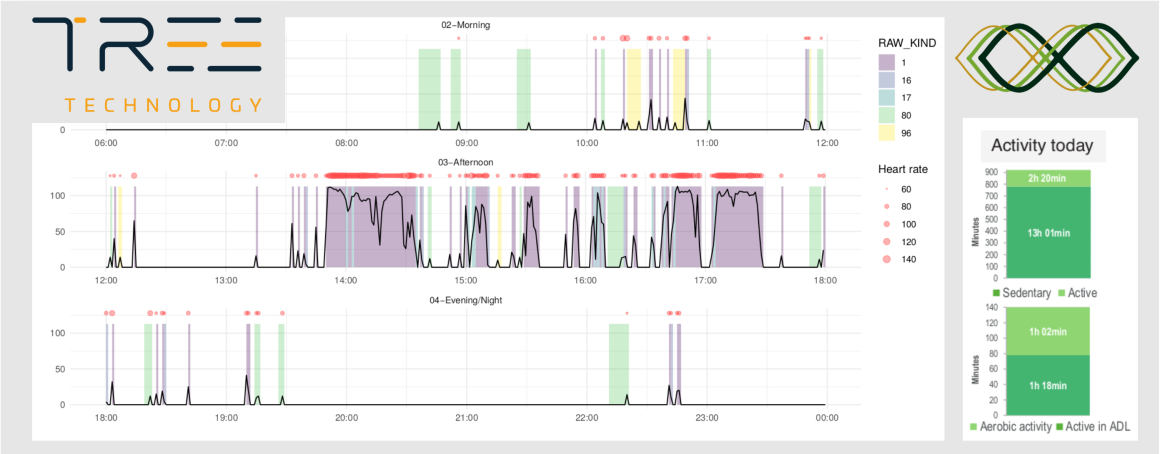
Competitive Advantages Over Other Sleep Trackers
Compared to other sleep tracking options, Oura Ring offers several distinct advantages:
vs. Apple Watch: The Apple Watch provides basic sleep tracking but requires nightly charging, meaning you must choose between sleep tracking and having a charged watch for the next day. Apple Watch also lacks a dedicated sleep score, temperature tracking, and the sophisticated recovery algorithms that make Oura valuable. However, Apple Watch excels at workout tracking and offers a much broader ecosystem of features beyond sleep.
vs. Whoop 4.0: Whoop focuses heavily on recovery and sleep quality similar to Oura, but requires wearing a wristband that many users find uncomfortable for sleep. Whoop also costs significantly more ($30/month subscription vs. Oura’s $5.99/month) and doesn’t offer the discreet form factor that makes Oura so appealing. Both devices excel at recovery tracking, but Oura wins on comfort and price.
vs. Fitbit: Fitbit devices offer decent sleep tracking at a lower price point, but their accuracy lags behind Oura’s according to independent studies. Fitbit’s sleep staging algorithms are less sophisticated, and the devices lack the advanced temperature tracking and HRV analysis that biohackers value. Fitbit wins on price and workout tracking but loses on sleep accuracy and recovery insights.
vs. Garmin: Garmin watches provide excellent fitness tracking and respectable sleep monitoring, but they don’t match Oura’s sleep accuracy or recovery focus. Garmin devices also require more frequent charging and are bulkier for sleep wear. However, Garmin significantly outperforms Oura for workout tracking, GPS navigation, and multisport functionality.
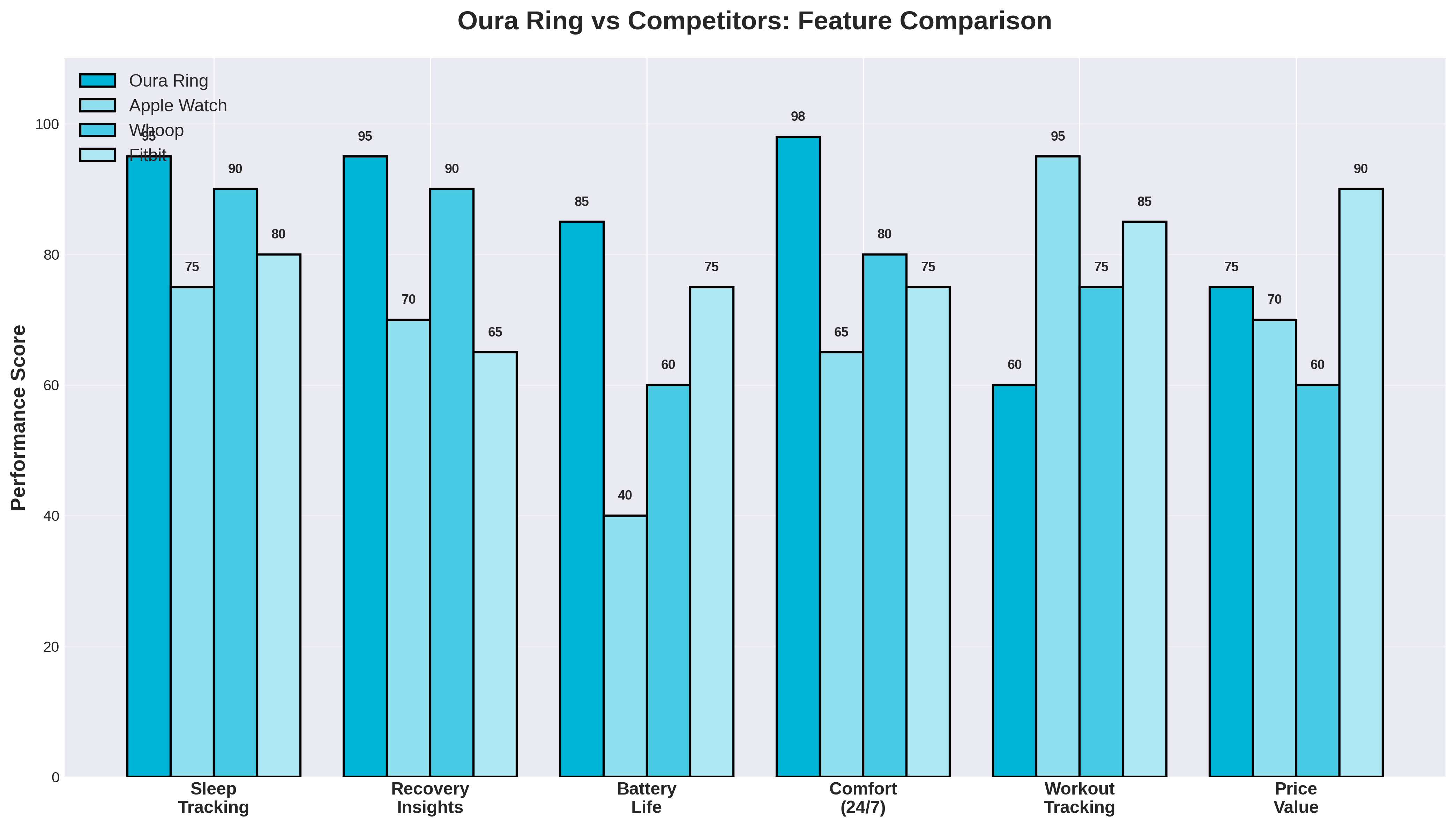
Recovery & HRV: The Biohacker’s Gold Standard
For serious biohackers and performance optimizers, Heart Rate Variability (HRV) represents the holy grail of recovery metrics. HRV measures the variation in time between consecutive heartbeats, serving as a window into your autonomic nervous system balance. Higher HRV generally indicates better recovery, stress resilience, and cardiovascular fitness, while declining HRV can signal overtraining, illness, or excessive stress.
Why HRV Matters for Optimization
Your autonomic nervous system has two branches: the sympathetic nervous system (fight-or-flight) and the parasympathetic nervous system (rest-and-digest). When you’re well-recovered and unstressed, your parasympathetic nervous system dominates, allowing your heart rate to vary more between beats. When you’re stressed, overtrained, or ill, your sympathetic nervous system takes over, reducing heart rate variability.
By tracking HRV trends over time, biohackers can make data-driven decisions about training intensity, stress management, and recovery protocols. A rising HRV trend indicates successful adaptation to training stress and improving fitness. A declining HRV trend suggests you need more recovery time, better sleep, stress reduction, or illness prevention measures.
Oura’s HRV Measurement Advantage
The 2025 independent study that compared consumer wearables found that Oura Ring provides the most accurate HRV measurements among all devices tested. This accuracy advantage stems from three key factors:
Finger-based PPG provides cleaner signals than wrist-based measurements. The arteries in your fingers are closer to the skin surface and have better blood flow consistency, resulting in higher-quality photoplethysmography data. This translates directly to more accurate HRV calculations.
Nighttime measurement during deep sleep eliminates the variability introduced by daytime stress, movement, and cognitive load. Oura specifically measures HRV during your deepest sleep periods when your body is most relaxed and your parasympathetic nervous system is most active. This standardized measurement window makes day-to-day comparisons more meaningful.
Infrared LED technology optimizes signal quality without disrupting sleep. Unlike green LEDs that can be affected by skin tone and ambient light, infrared LEDs penetrate tissue more consistently and work reliably across all skin tones and lighting conditions.
Readiness Score: HRV Plus Context
While HRV alone provides valuable information, Oura’s Readiness Score takes recovery assessment to the next level by integrating HRV with multiple other biosignals. The Readiness Score considers your HRV relative to your personal baseline, your resting heart rate trend, your body temperature deviation, your sleep quality and duration, your recent activity balance, and your long-term sleep patterns.
This holistic approach prevents the common pitfall of over-interpreting a single HRV reading. Your HRV might be slightly lower than usual, but if you slept exceptionally well, your temperature is normal, and your resting heart rate is stable, your Readiness Score might still be high. Conversely, a normal HRV reading combined with poor sleep, elevated temperature, and high resting heart rate would result in a low Readiness Score, correctly indicating you need recovery.
Users consistently report that following Readiness Score recommendations leads to better training outcomes, fewer injuries, and improved long-term performance. The score provides permission to rest when needed and confidence to push hard when your body is ready—a balance that’s difficult to achieve through subjective assessment alone.
Women’s Health Features: Cycle Tracking Done Right
One of Oura Ring’s most impressive capabilities is its AI-powered menstrual cycle prediction, which achieves over 90% accuracy without requiring any manual input. This feature transforms the ring from a general health tracker into a powerful tool for women’s health optimization.
Continuous Temperature Monitoring: The Secret Sauce
Traditional fertility tracking requires taking your basal body temperature (BBT) every morning at the same time before getting out of bed—a tedious process that’s easy to forget and difficult to maintain consistently. Oura Ring eliminates this burden through continuous temperature monitoring that functions as an automatic BBT tracker.
The ring measures your skin temperature throughout the night, identifying the subtle 0.3-0.5°C rise that occurs after ovulation due to increased progesterone levels. By tracking these temperature patterns over multiple cycles, Oura’s AI learns your individual cycle characteristics and predicts when you’ll ovulate, when your period will arrive, and when your fertile window opens and closes.
Integrated Biosignal Analysis
Oura doesn’t rely on temperature alone. The cycle prediction algorithm also incorporates heart rate variability and resting heart rate data, both of which fluctuate predictably throughout the menstrual cycle. HRV typically peaks during the follicular phase (after menstruation) and declines during the luteal phase (after ovulation). Resting heart rate follows the opposite pattern, rising during the luteal phase and declining during the follicular phase.
By combining temperature, HRV, and resting heart rate data, Oura achieves prediction accuracy that rivals or exceeds manual BBT tracking methods. The system continuously learns from your data, improving its predictions over time as it accumulates more cycle information.
Practical Applications for Women’s Health
The cycle tracking feature enables several practical applications:
Natural family planning becomes significantly easier when you have accurate predictions of your fertile window. While Oura isn’t FDA-approved as a contraceptive device (and shouldn’t be relied upon as sole birth control), it provides valuable information for couples using fertility awareness methods.
Workout and nutrition optimization based on cycle phase can improve training outcomes and reduce injury risk. Many female athletes find they can push harder during the follicular phase when estrogen is high and energy levels peak, while the luteal phase calls for lower-intensity work and more recovery focus. Oura’s cycle tracking makes it easy to align training with your hormonal rhythms.
Early pregnancy detection becomes possible through sustained temperature elevation. After conception, progesterone levels remain elevated, keeping your body temperature higher than usual. If your temperature stays elevated for 18+ days after ovulation, pregnancy is likely. Oura can alert you to this pattern before a pregnancy test would show positive results.
Menopause transition tracking helps women understand the hormonal changes occurring during perimenopause and menopause. Oura can identify irregular cycles, temperature pattern changes, and sleep disruptions associated with hormonal fluctuations, providing valuable data to share with healthcare providers.
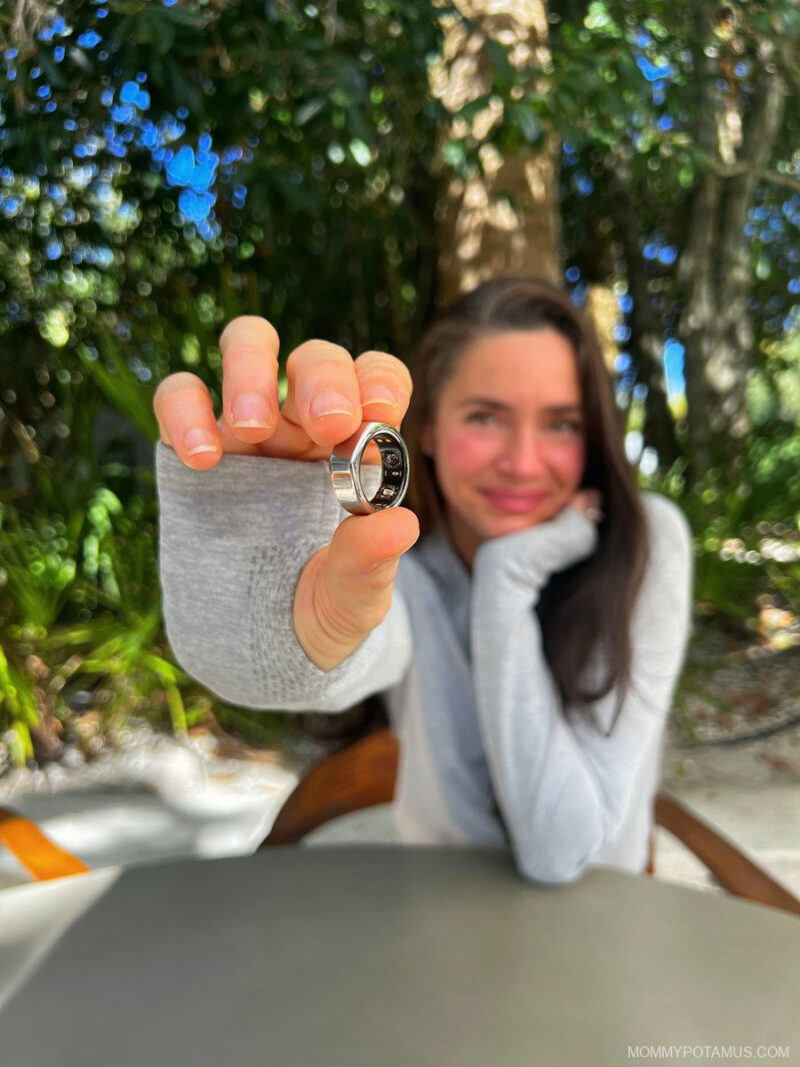
Pregnancy Mode: Beyond Conception
Once pregnant, Oura offers a dedicated Pregnancy Mode that tracks physiological changes throughout all three trimesters. The mode provides educational content about what’s happening in your body each week, tracks temperature and heart rate changes associated with pregnancy, monitors sleep quality (which often declines during pregnancy), and offers guidance on safe activity levels.
While pregnancy tracking is a nice addition, it’s worth noting that Oura Ring isn’t a medical device and shouldn’t replace prenatal care. However, it can provide valuable supplementary data to discuss with your obstetrician, particularly regarding sleep quality, activity levels, and stress indicators.
Activity Tracking: The Weakest Link
If you’re considering Oura Ring primarily for workout tracking and exercise metrics, you should probably look elsewhere. This is the device’s most significant limitation and the area where competitors like Apple Watch, Garmin, and even Fitbit significantly outperform it.
What Oura Does Well
To be fair, Oura Ring handles certain activity tracking tasks quite well:
Step counting is accurate and reliable for daily movement. Oura consistently matches or exceeds the accuracy of wrist-based step counters, correctly identifying walking versus other movements.
Automatic activity detection learns over time to recognize your common activities. Initially, you’ll need to manually correct some auto-detected activities (did that elevated heart rate come from a workout or from climbing stairs?), but the system improves as it accumulates data about your patterns.
Calorie burn estimation for daily activities and low-intensity exercise is reasonably accurate. Oura does a good job estimating energy expenditure for walking, light housework, standing, and other daily movements.
Zone 2 cardio tracking works well for low-intensity steady-state exercise. If you’re doing easy runs, long walks, or gentle cycling, Oura captures this data effectively.
Where Oura Falls Short
The problems emerge when you want detailed workout metrics or high-intensity exercise tracking:
No real-time heart rate display during workouts means you can’t use Oura to monitor your heart rate zones while exercising. The ring captures heart rate data during workouts, but you can’t see it until after the activity is complete. This makes it useless for heart rate-based training.
Limited workout modes compared to dedicated fitness watches. Oura offers basic activity tracking but lacks the dozens of sport-specific modes found on Garmin or Apple Watch devices.
No GPS tracking means you can’t track running routes, cycling distances, or outdoor workout locations. You’ll need to use your phone or a separate GPS watch for this functionality.
Heart rate accuracy drops during high-intensity exercise. The ring form factor limits sensor contact during vigorous movement, leading to less reliable heart rate data during HIIT workouts, heavy lifting, or intense cardio. Chest straps and wrist-based devices generally outperform Oura for exercise heart rate tracking.
Ring form factor limitations become apparent during certain exercises. The ring can chafe during deadlifts, pull-ups, and other exercises requiring tight grip. Some users report discomfort during kettlebell work or barbell exercises. While the ring is durable enough to withstand these activities, it’s not always comfortable.
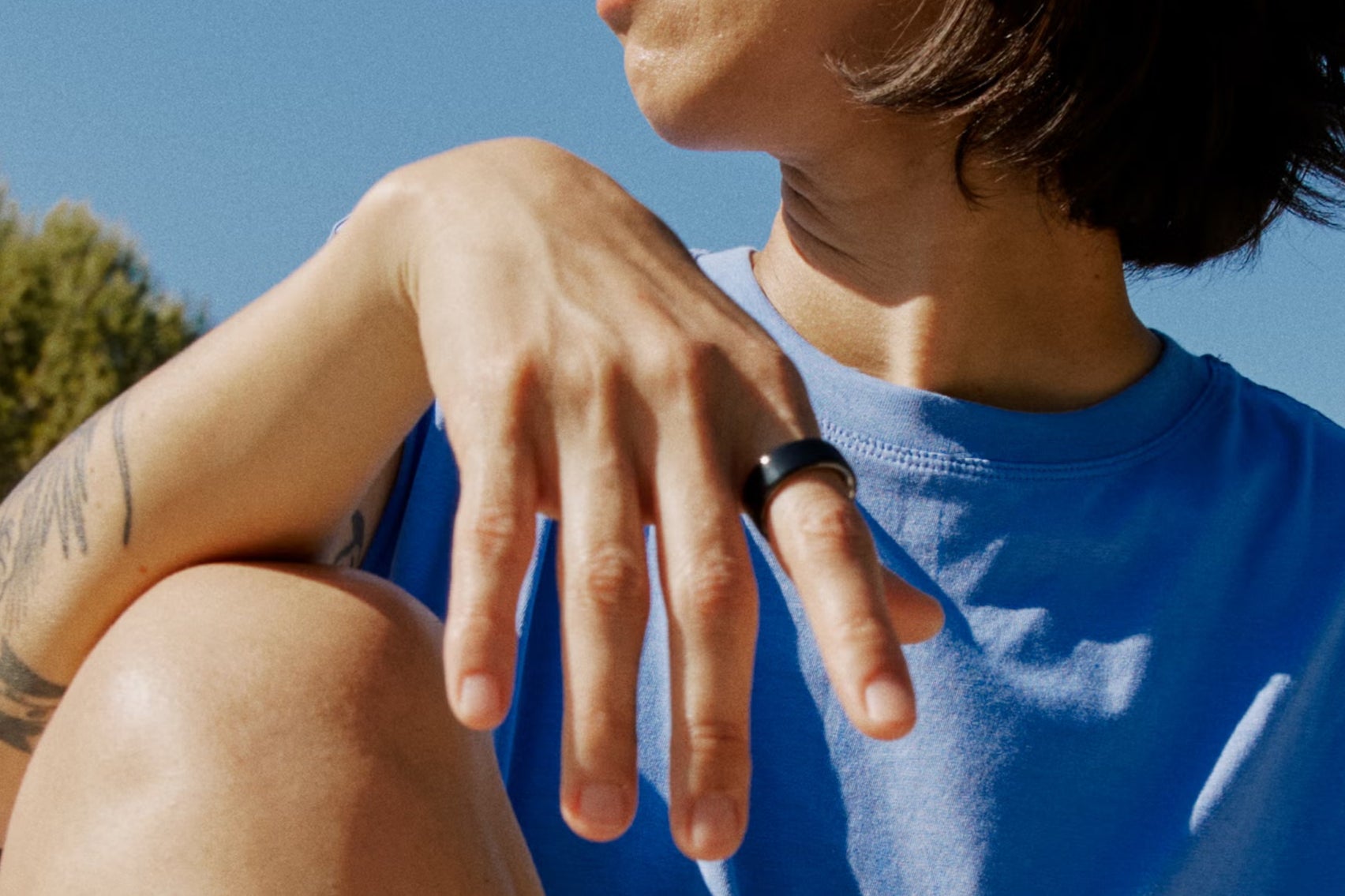
The Bottom Line on Activity Tracking
Oura Ring is designed for recovery-focused athletes, not competitive training. If your primary goal is optimizing sleep and recovery while maintaining general activity awareness, Oura works great. If you need detailed workout metrics, GPS tracking, or real-time heart rate monitoring, you’ll want to pair Oura with an Apple Watch, Garmin, or other dedicated fitness watch.
Many serious athletes use this exact approach: wearing Oura 24/7 for sleep and recovery tracking while using a sport-specific watch for workouts. This combination provides the best of both worlds—comprehensive recovery insights from Oura and detailed performance metrics from a dedicated fitness device.
The App Experience: Intuitive Design Meets Deep Data
A wearable device is only as good as its companion app, and Oura has invested heavily in creating an interface that balances simplicity with depth. The 2025 app redesign represents a significant improvement over previous versions, delivering what reviewers consistently call the most intuitive smart ring app on the market.
Three-Tab Structure: Simplicity by Design
The Oura app uses a clean three-tab structure that makes navigation effortless:
Today provides your daily overview with at-a-glance scores for Readiness, Sleep, and Activity. Each score is displayed prominently with a simple tap-to-expand interface that reveals deeper details. The Today tab answers the essential question: “How am I doing right now, and what should I focus on today?”
Vitals offers detailed metrics for users who want to dive deeper into their data. Here you’ll find heart rate graphs, HRV trends, temperature deviations, sleep stage breakdowns, and activity summaries. The Vitals tab satisfies data enthusiasts without overwhelming casual users who just want actionable insights.
My Health presents long-term trends and patterns across weeks and months. This is where you can identify how your sleep quality has changed over time, whether your HRV is trending upward or downward, and how your activity levels compare to previous months. The trend analysis helps you see the forest instead of getting lost in the trees of daily fluctuations.
Oura Advisor: AI-Powered Guidance
One of the most valuable recent additions to the Oura app is Oura Advisor, an AI-powered chatbot that answers questions about your data in natural language. Instead of trying to interpret complex metrics yourself, you can ask questions like:
- “Why is my readiness score low today?”
- “How does alcohol affect my sleep quality?”
- “What can I do to improve my HRV?”
- “Is my recent temperature elevation concerning?”
Oura Advisor provides personalized responses based on your actual data, not generic advice. The AI understands context and can identify patterns you might miss. For example, it might notice that your sleep quality consistently drops on Sunday nights and suggest adjusting your weekend routine to improve Monday readiness.
Educational Content: 50+ Science-Backed Videos
Oura includes an extensive library of educational videos explaining the science behind each metric, how to interpret your data, and evidence-based strategies for improvement. These videos transform the app from a simple data display into a comprehensive health education platform.
Topics covered include sleep optimization techniques, stress management strategies, understanding HRV and its implications, temperature tracking and illness detection, cycle tracking for women, and recovery protocols for athletes. The content is produced in collaboration with sleep researchers, sports scientists, and medical professionals, ensuring accuracy and practical applicability.
Rest Mode: Permission to Recover
When you’re sick, injured, or dealing with high stress, the last thing you need is a fitness tracker nagging you to hit your step goal. Oura’s Rest Mode solves this problem by disabling all activity targets and goals while continuing to track your biometrics. This feature provides psychological permission to focus on recovery without feeling guilty about missing arbitrary targets.
Rest Mode is particularly valuable during illness, when your body needs energy for immune function rather than physical activity. By tracking your temperature, heart rate, and HRV during illness, Oura helps you identify when you’re truly recovered and ready to resume normal activity—not just when you feel slightly better.
Adaptive Goal Setting: Smart Targets
Unlike most fitness trackers that set static daily goals (10,000 steps, 30 active minutes, etc.), Oura automatically adjusts your targets based on your Readiness Score. On days when you’re well-recovered and ready to perform, Oura might challenge you with a 12,000-step goal. On days when your Readiness Score indicates you need recovery, it might lower your target to 6,000 steps.
This adaptive approach prevents the counterproductive behavior of pushing through fatigue to hit arbitrary numbers. It also helps prevent overtraining by encouraging rest when your body needs it most. Users report that this feature alone significantly improves their relationship with activity tracking, transforming it from a source of stress into a helpful guide.
The Subscription Question: Worth the Monthly Cost?
One of the most controversial aspects of Oura Ring is the required monthly subscription of $5.99 for Gen 3 and Gen 4 users. This subscription model has generated significant backlash, particularly from Gen 2 users who enjoyed lifetime access without ongoing fees. However, examining what the subscription includes reveals a more nuanced picture.
What’s Included with the Subscription
Your $5.99/month Oura subscription unlocks:
- All tracking features including sleep, activity, readiness, HRV, temperature, and cycle prediction
- Oura Advisor AI for personalized guidance and data interpretation
- Trend analysis showing long-term patterns across weeks and months
- Educational content including 50+ science-backed videos
- Continuous algorithm improvements that enhance accuracy over time
- New features as they’re developed and released
- Cloud storage for your health data with secure backup
Without a subscription, Gen 3+ users only receive basic sleep and activity data—essentially turning your $300+ ring into a glorified step counter. This means the subscription is effectively mandatory for anyone who wants the full Oura experience.
Comparing Subscription Costs
While $5.99/month might seem expensive for a wearable, it’s actually quite reasonable compared to competitors:
Whoop 4.0 requires a $30/month subscription (or $239/year paid annually), making it 5x more expensive than Oura. Whoop doesn’t sell the hardware separately—the subscription includes the device, but you’re locked into ongoing payments with no option to buy outright.
Apple Watch doesn’t require a subscription for basic functionality, but many users pay for Apple Fitness+ ($9.99/month) to access guided workouts and advanced metrics. The total cost of ownership over three years (device + Fitness+) often exceeds Oura’s combined hardware and subscription costs.
Fitbit Premium costs $9.99/month and is increasingly necessary to access advanced features like detailed sleep analysis, readiness scores, and guided programs. Like Oura, Fitbit has shifted toward a subscription model for premium features.
Garmin doesn’t require subscriptions for most features, which represents a significant advantage for users who prefer one-time purchases. However, Garmin devices typically cost $400-$800 for models with comparable health tracking features, partially offsetting the subscription savings.
The Value Proposition
Whether the Oura subscription is “worth it” depends on your priorities:
Continuous improvements justify ongoing costs for users who value having the latest algorithms and features. Oura regularly updates its sleep staging models, HRV calculations, and prediction algorithms based on new research. These improvements require ongoing development investment that subscription revenue supports.
AI predictions require cloud processing for features like cycle prediction, illness detection, and cardiovascular age estimation. These computationally intensive analyses can’t run on the ring itself, necessitating cloud infrastructure that subscription fees help maintain.
Educational content and personalized insights provide value beyond raw data. Many users report that the educational videos and Oura Advisor guidance help them make behavior changes they wouldn’t have discovered through data alone.
Alternative: Buy Gen 2 used if you want to avoid the subscription. The second-generation Oura Ring doesn’t require a subscription and still provides excellent sleep tracking and basic recovery metrics. However, you’ll miss out on SpO2 tracking, improved sensors, cycle prediction, Oura Advisor, and ongoing algorithm improvements.
Lifetime Value Calculation
Let’s calculate the total cost of ownership over three years:
- Oura Ring Gen 3: $299 (ring) + $216 (36 months × $6) = $515 total
- Whoop 4.0: $1,080 (36 months × $30) = $1,080 total
- Apple Watch Series 9 + Fitness+: $399 (watch) + $360 (36 months × $10) = $759 total
- Fitbit Sense 2 + Premium: $249 (device) + $360 (36 months × $10) = $609 total
From a pure cost perspective, Oura Ring represents competitive value compared to alternatives, particularly when you consider its superior sleep tracking accuracy and recovery focus.
Pros & Cons: The Honest Assessment
After extensive research and analysis, here’s a balanced assessment of Oura Ring’s strengths and limitations:
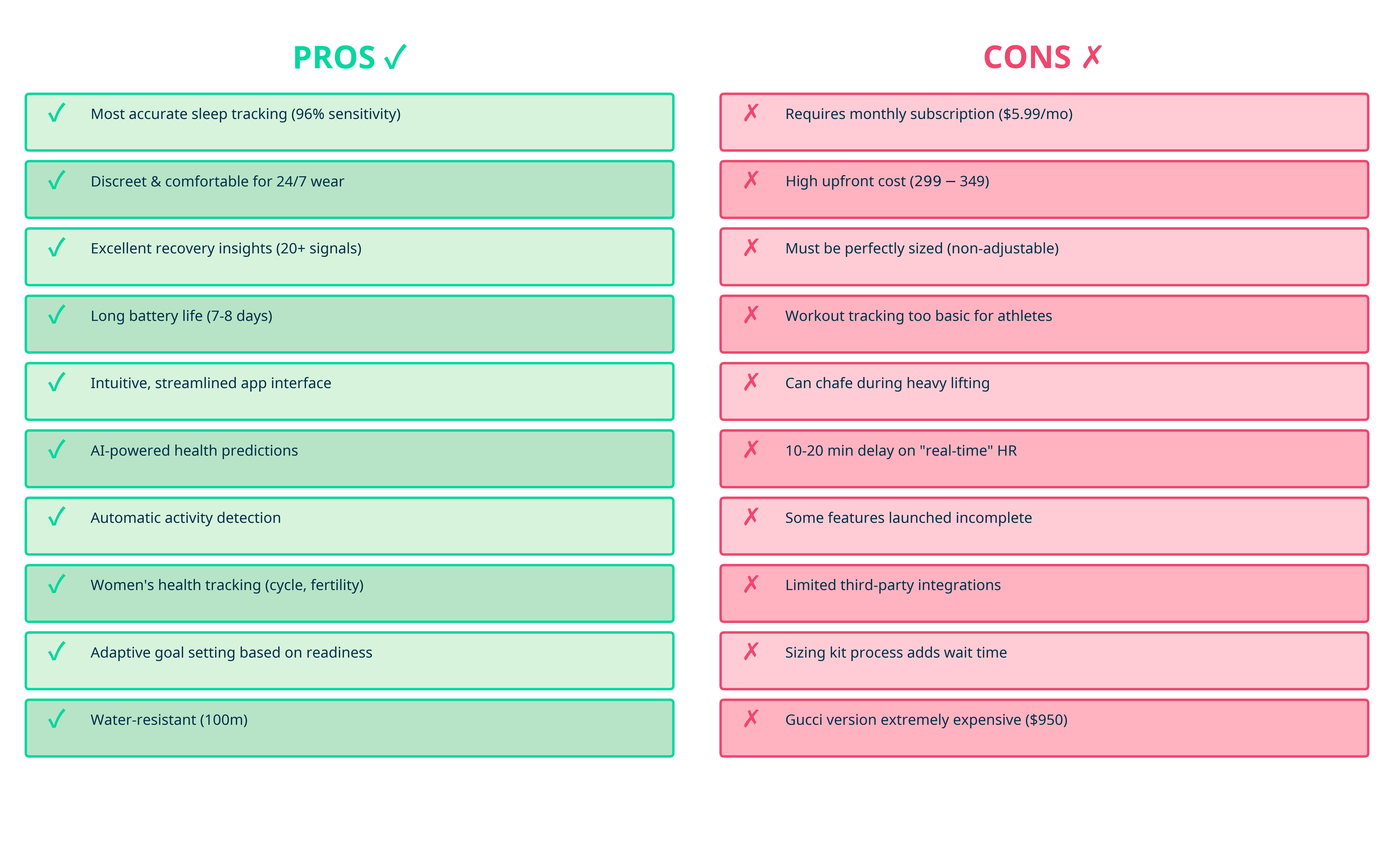
The Pros: Where Oura Excels
Most accurate sleep tracking available in a consumer wearable, with 96% sensitivity validated by peer-reviewed research. If sleep optimization is your priority, Oura is the gold standard.
Discreet and comfortable for 24/7 wear, unlike bulky smartwatches that feel intrusive during sleep or formal occasions. The ring form factor enables true continuous monitoring without compromising comfort or style.
Excellent recovery insights from 20+ biosignals synthesized into an actionable Readiness Score. The holistic approach to recovery assessment outperforms single-metric systems like HRV-only trackers.
Long battery life of 7-8 days eliminates daily charging anxiety and enables uninterrupted week-long tracking. You can travel without bringing the charger for short trips.
Intuitive app interface with the 2025 redesign delivering the most streamlined and user-friendly experience among smart rings. The three-tab structure and Oura Advisor AI make complex data accessible.
AI-powered health predictions for illness detection, cycle tracking, and cardiovascular age provide actionable early warnings and long-term health insights.
Automatic activity detection that learns your patterns over time, eliminating the need to manually log most activities.
Women’s health tracking with 90%+ accurate cycle prediction, fertility window identification, and pregnancy monitoring—all without manual temperature taking.
Adaptive goal setting that adjusts daily targets based on your Readiness Score, preventing overtraining and encouraging recovery when needed.
Water-resistant to 100m, making it suitable for swimming, saunas, ice baths, and all daily activities without removal.
The Cons: Where Oura Falls Short
Requires monthly subscription of $5.99 for Gen 3+ users to access full features, adding ongoing costs to the already premium initial price.
High upfront cost of $299-$349 creates a significant barrier to entry, especially when combined with the subscription requirement.
Must be perfectly sized since rings aren’t adjustable. Weight fluctuations or finger swelling can affect fit and accuracy. The sizing process adds wait time before you can start using your ring.
Workout tracking too basic for serious athletes who need detailed exercise metrics, GPS tracking, or real-time heart rate monitoring during workouts.
Can chafe during heavy lifting or exercises requiring tight grip, such as deadlifts, pull-ups, or kettlebell work. Some users find they need to remove the ring for certain exercises.
10-20 minute delay on “real-time” heart rate, making it useless for monitoring heart rate zones during exercise. The ring only provides instant readings when you manually request them.
Some Gen 3 features launched incomplete, with SpO2 tracking, improved sleep algorithms, and workout heart rate arriving months after the initial release. This pattern of promising features before they’re ready has frustrated some users.
Limited third-party integrations compared to Apple Watch or Garmin. While Oura syncs with Apple Health and Google Fit, it doesn’t integrate with as many fitness apps and platforms.
Sizing kit process adds wait time between ordering and actually using your ring. You must order a free sizing kit, determine your size, then order the actual ring—a process that can take 2-3 weeks.
Gucci version extremely expensive at $950, making it inaccessible for most users despite the appealing design.
Who Should Buy Oura Ring?
After analyzing the features, accuracy, and value proposition, clear patterns emerge about who will benefit most from Oura Ring and who should look elsewhere.
Ideal Users: The Sweet Spot for Oura
Biohackers prioritizing sleep and recovery optimization represent Oura’s core audience. If you’re focused on maximizing recovery, improving sleep quality, and making data-driven decisions about training and stress management, Oura delivers unmatched value.
Individuals who dislike bulky wearables but want comprehensive health data will appreciate the ring’s discreet form factor. You can wear it to formal events, during sleep, and throughout daily life without the obtrusiveness of a smartwatch.
Women tracking fertility, menstrual cycles, or pregnancy will find Oura’s automatic temperature monitoring and cycle prediction invaluable. The 90%+ accuracy eliminates the need for manual BBT tracking while providing deeper insights than calendar-based methods.
Health-conscious professionals managing stress and burnout benefit from Oura’s focus on recovery and rest. The Readiness Score provides objective feedback about when to push and when to rest, helping prevent burnout before it becomes severe.
Longevity-focused individuals tracking HRV, cardiovascular age, and long-term health trends will appreciate Oura’s scientific rigor and accuracy. The device provides the data needed for informed decisions about health optimization strategies.
Anyone seeking accurate sleep data without nightly charging will value the 7-8 day battery life and set-it-and-forget-it user experience. Oura requires minimal interaction while delivering maximum insights.
Not Ideal For: When to Look Elsewhere
Competitive athletes needing detailed workout metrics should choose Apple Watch, Garmin, or Whoop instead. Oura’s workout tracking is too basic for serious training, lacking GPS, real-time heart rate, and sport-specific features.
Budget-conscious users unwilling to pay subscription fees might prefer Garmin devices (no subscription) or used Gen 2 Oura Rings (no subscription required). The ongoing $5.99/month cost adds up over time.
People who frequently change ring sizes due to weight fluctuations or finger swelling will struggle with the non-adjustable ring format. Significant weight changes may require purchasing a new ring in a different size.
Those wanting real-time heart rate during exercise need a wrist-based device or chest strap. Oura’s delayed heart rate updates make it useless for heart rate-based training.
Users requiring extensive third-party app integrations will find Oura’s ecosystem more limited than Apple Watch or Garmin. If you rely on specific fitness apps or platforms, verify compatibility before purchasing.
Anyone prioritizing workout tracking over sleep optimization should choose a dedicated fitness watch. Oura is designed for recovery-first athletes, not those focused primarily on performance metrics.
Final Verdict: 9/10 – The Ultimate Recovery Tracker
After comprehensive analysis of features, accuracy, competitive positioning, and value proposition, the verdict is clear: Oura Ring delivers on its promise as the best sleep and recovery tracker for biohackers. While it has limitations—particularly in workout tracking—it excels in its core mission of optimizing rest and recovery.
Why Oura Ring Wins
Unmatched sleep tracking accuracy backed by peer-reviewed research establishes Oura as the gold standard for consumer sleep monitoring. The 96% sensitivity for sleep detection and superior sleep staging algorithms outperform all competitors.
Most comprehensive recovery insights from any consumer wearable, synthesizing 20+ biosignals into an actionable Readiness Score. The holistic approach to recovery assessment provides genuine value for optimization-focused users.
Form factor enables true 24/7 wear without discomfort, sleep disruption, or style compromise. The ring’s discretion and comfort make continuous monitoring actually feasible, unlike bulky smartwatches.
AI-powered predictions for illness detection, cycle tracking, and cardiovascular age provide early warnings and long-term health insights that drive behavior change.
Continuous improvements through algorithm updates and new features justify the subscription cost for users who value staying current with the latest health tracking science.
The Bottom Line
If recovery and sleep optimization are your priorities, Oura Ring is the gold standard and worth the investment. The combination of accuracy, insights, and user experience justifies the premium price for serious biohackers. Pair it with an Apple Watch or Garmin if you need detailed workout tracking—many elite athletes use exactly this combination.
The subscription cost is reasonable compared to competitors, especially Whoop’s $30/month requirement. Sizing and upfront cost create barriers, but the long-term value is exceptional for users who prioritize recovery over activity.
Recommendation: Buy if you’re serious about sleep and recovery optimization. Skip if you prioritize workout tracking over rest, or if the subscription model doesn’t align with your values. For the right user—recovery-focused biohackers who value sleep quality and long-term health—Oura Ring represents the best investment available in wearable health technology.
Frequently Asked Questions
Q: Can I use Oura Ring without the subscription?
A: Gen 3 and Gen 4 users receive only basic sleep and activity data without a subscription. The Readiness Score, detailed insights, trend analysis, and Oura Advisor require the $5.99/month subscription. Gen 2 users (no longer sold new) don’t require a subscription.
Q: How accurate is Oura Ring compared to medical devices?
A: Oura achieves 96% sensitivity for sleep detection and is the most accurate consumer wearable for HRV and resting heart rate according to independent studies. However, it’s not a medical device and shouldn’t replace professional medical monitoring.
Q: Can I wear Oura Ring during workouts?
A: Yes, the ring is durable and water-resistant to 100m. However, it may chafe during exercises requiring tight grip (deadlifts, pull-ups) and provides less accurate heart rate data during high-intensity exercise compared to chest straps or wrist devices.
Q: How long does the battery last?
A: 7-8 days on a single charge under normal use. Charging takes 60-90 minutes using the included USB-C magnetic stand.
Q: What if my ring size changes?
A: You’ll need to purchase a new ring in the correct size. Oura doesn’t offer exchanges for size changes after purchase, so proper sizing is critical. Use the free sizing kit and wear it for several days to ensure accuracy.
Q: Does Oura Ring work with iPhone and Android?
A: Yes, the Oura app is available for both iOS (iPhone) and Android devices. The experience is identical on both platforms.
Q: Can I shower, swim, or sauna with Oura Ring?
A: Yes, the ring is water-resistant to 100m and suitable for all water activities including swimming, showering, saunas, and ice baths.
Q: How does Oura compare to Whoop?
A: Both excel at recovery tracking, but Oura offers a more discreet form factor, longer battery life, and lower subscription cost ($5.99 vs $30/month). Whoop provides better workout tracking and strain metrics. Choose based on whether you prioritize discretion (Oura) or workout insights (Whoop).
Where to Buy: Amazon Links
Ready to optimize your sleep and recovery? Here are the best places to purchase Oura Ring:
Oura Ring Gen 3 Heritage (Silver, Black, or Gold) – $206
The classic Oura Ring design with a subtle plateau on top. Available in sizes 6-13. Includes free sizing kit and 6-month subscription trial.
Oura Ring Gen 4 Horizon (Fully Round Design) – $499
The latest design with a completely round profile for a more traditional ring appearance. Features improved sensors and algorithm updates. Available in sizes 6-13.
Oura Ring Charging Cable Replacement
Backup USB-C charging stand for travel or office use. Compatible with all Gen 3 and Gen 4 rings.
Oura Ring Sizing Kit (Free from Oura)
Order directly from Oura’s website to receive a free sizing kit with plastic ring samples. Wear for 24-48 hours to determine your perfect size before purchasing.
Conclusion: The Future of Recovery Tracking
The Oura Ring represents a fundamental shift in how we approach wearable health technology—prioritizing recovery over activity, sleep quality over step counts, and long-term optimization over short-term metrics. For biohackers, athletes, and health-conscious individuals willing to invest in their recovery, Oura delivers unmatched value through scientific accuracy, comprehensive insights, and a user experience that actually enables continuous monitoring.
While the device has limitations—particularly in workout tracking and the controversial subscription model—it excels brilliantly in its core mission. The combination of 96% sleep detection accuracy, most-accurate HRV measurements, AI-powered health predictions, and a form factor that enables true 24/7 wear makes Oura Ring the gold standard for recovery tracking.
As wearable technology continues evolving, Oura Ring stands as proof that sometimes less is more—that a focused device optimized for specific goals can outperform feature-bloated smartwatches trying to do everything. For the right user, this tiny titanium ring delivers insights that transform how you sleep, recover, and optimize your health.
Ready to optimize your recovery? Get your Oura Ring on Amazon today and start your journey toward better sleep and peak performance.
References
- Oura Ring Generation 3 Official Product Page
- DC Rainmaker – Oura Ring Generation 3 In-Depth Review
- The Verge – Oura Ring Generation 3 Review
- Business Insider – Oura Ring 4 Review 2025
- Independent Study: Oura Ring Most Accurate for HRV & Resting Heart Rate (2025)
- Accuracy Assessment of Oura Ring Nocturnal Heart Rate and HRV – NIH Study
- The Sleep of the Ring: Comparison of ŌURA Sleep Tracker Against Polysomnography
- Wirecutter – The Best Sleep Trackers of 2025
Disclosure: This blog post contains Amazon affiliate links. If you purchase through these links, we may earn a commission at no additional cost to you. All opinions and assessments are based on independent research and analysis.

